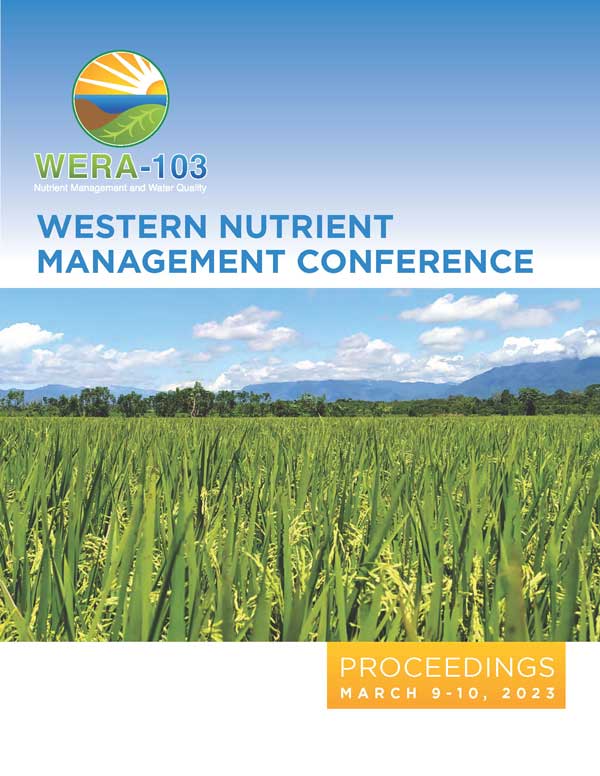Download the Conference Proceedings
Proceedings
Authors
| Filter results6 paper(s) found. |
|---|
1. Effects of Semiarid Wheat Agriculture on Soil Microbial Properties: A ReviewAgricultural management decisions on factors such as tillage, fertilization, and cropping system determine the fate of much of the world’s soils, and soil... J. Norton, H. Rodgers, L. Van diepen |
2. Impact of Soil Health Practices in an Irrigated AgroecosystemRegional farming practices in cold semiarid irrigated agroecosystems with short growing seasons are shifting to reduced tillage and overhead irrigation to stay economically viable, but more research is needed on the impact of soil health practices such as crop diversification, reduced tillage, and livestock integration on soil physical and chemical properties in these systems. A multi-year study from 2014-2020 in the Bighorn Basin of Northwest Wyoming used a three-crop rotation (diversification... T. Vance, V. Crowe, J. Norton |
3. Developing a Soil Test Kit for Extension ProgrammingSoil and horticulture Extension programs are enhanced by hands-on and interactive activities. Readily available and inexpensive soil test kits can be useful in Extension programming in the classroom and the field. With the addition of a few extra supplies and tools, a complete kit can be created for Extension educators to use in horticulture and soil management programming. Five soil test kits from different manufactures were evaluated for both ease of use and accuracy. All kits included... C. Youngquist, J. Norton, J. Harsh |
4. Nitrogen Dynamics in Conventional, Reduced Tillage and Organic Irrigated Systems: Results of a Four-year Experiment in WyomingSoil nitrogen (N) is critically important for crop production. A field experiment was conducted in eastern Wyoming to evaluate soil mineralizable (mineralized in 14 days incubation) and inorganic N contents as influenced by conventional, organic and reduced-tillage management approaches for cash-crop and forage production in eastern Wyoming. Soil samples were collected from all treatments (2 production systems x 3 management approaches) during 2009-2012 and analyzed for soil mineralizable and... R. Ghimire, J. Norton |
5. An Evaluation of the Effects of Diversified Cropping Systems on Soil Organic Matter, Nutrient Dynamics, Yield and Economics of Dry Land Winter Wheat and Irrigated Sugar Beet in WyomingThe overall objective of this study is to evaluate the effects of different cropping systems and irrigation methods used by Wyoming farmers on soil chemical, biological and physical properties, yield, economic returns and long term ecological sustainability of dryland and irrigated crop production. The Project, which is being carried out on dryland winter wheat systems in the Albin and Slater areas and on irrigated sugar beet systems in the Big Horn basin near Powell, will go... J. Norton, E. Mukhwana |
6. No-till Grain Production in Wyoming: Status and PotentialIn dryland cropping systems, optimal yields require that nutrient supply matches the soil’s yield potential supported by available moisture. Conservation tillage systems that leave at least 30 percent of the soil surface covered by residue dramatically increase moisture retained in the soil compared to crop-fallow systems. This enables producers to plant two, three, or four consecutive crops, or continuously, without fallow, but water and nutrient needs are much more closely balanced with... J. Norton |
